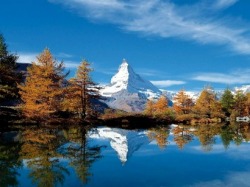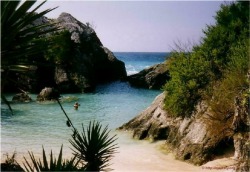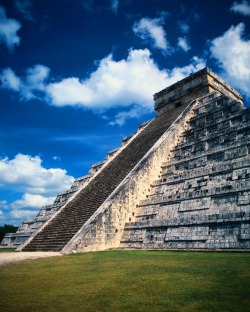Weather and Your Honeymoon

A major concern of most honeymooners is weather, especially for those traveling to warm climates - the beach isn’t as much fun when it’s pouring rain. If you pay attention to weather from the fist step of planning, you will decrease the odds of "weather disappointment." If your heart is set on a particular destination, plan your honeymoon during the time of the year when the weather is best, even if it means delaying your travel dates. Alternatively, start with your travel dates and choose your destination based on where the weather is good.
Here is the down-low on the weather, hopefully this will spark some ideas for what can work for your honeymoon.
Here is the down-low on the weather, hopefully this will spark some ideas for what can work for your honeymoon.
Weather By Season
Winter Wonderland

For those taking a winter honeymoon, there are many great possibilities. If you are looking for a beach experience, the Caribbean (particularly the north and central islands) and coastal Mexico are excellent choices from January through April. Because this time of the year is considered "high season", hotel rates are near their peak (but so are your odds of great weather). For a more exotic winter beach option, the Maldives are a great choice this time of year.
If tanning on the beach is not your thing, winter presents numerous alternatives. Thailand weather is as good as it gets, only slightly hot and humid. It’s also summer Down Under and the best time to visit New Zealand. If you are looking for a diverse adventure combining both jungle and beach, January through April is ideal for a honeymoon to Costa Rica or Panama. Finally, if you are snow lovers, this is the time of year to curl up by the fireplace in a cozy lodge in the Rockies (US or Canada) or the Alps (France, Switzerland, Italy or Austria).
If tanning on the beach is not your thing, winter presents numerous alternatives. Thailand weather is as good as it gets, only slightly hot and humid. It’s also summer Down Under and the best time to visit New Zealand. If you are looking for a diverse adventure combining both jungle and beach, January through April is ideal for a honeymoon to Costa Rica or Panama. Finally, if you are snow lovers, this is the time of year to curl up by the fireplace in a cozy lodge in the Rockies (US or Canada) or the Alps (France, Switzerland, Italy or Austria).
Springtime Blossoms

Spring is one of the best times of the year to take a honeymoon, due to great weather in a wide variety of destinations. Those in search of a pristine beach will find just what their heart desires in Hawaii, Fiji and the Caribbean (particularly the central and southern islands).
Europe becomes an excellent choice as spring weather brings warmer temperatures, more sunshine and flowers blooming all around. Italy, France, England, Spain and Greece are exceptional choices for those desiring a bit of Old World charm. Late spring (May-June) is the ideal time to honeymoon in these countries.
What are the best Exotic locations to consider in the Spring? Bali, Egypt, Turkey and Morocco all hit their peak during these months. If your dream is ultimate adventure and big game, late spring is an excellent time to take a safari in Africa.
Summer Loving

As summer heats up, your honeymoon options change a little. For starters, the Caribbean’s "hurricane season" starts in mid-July, so it’s best to avoid the region from then until the end of October. However, if your heart is set on going, head to the far southern islands (like Aruba) which are rarely affected by hurricanes. Fortunately, there are many other fine summer beach choices, ranging from popular destinations like Hawaii and French Polynesia to the distant Seychelles.
Europe can be great in the summer if you select your destinations and dates carefully. Overall, it is best to plan your trip for early July or mid-to-late September. Doing this will let you avoid the peak of the summertime heat and humidity (particularly in the south). You will also avoid the disappointment of visiting tourist facilities that often close during European summer holidays.
If you are looking for something different, this is the best time to visit Cape Town, South Africa. Other possibilities include the diving and snorkeling Great Barrier Reef in Australia and Bali (late summer).
Europe can be great in the summer if you select your destinations and dates carefully. Overall, it is best to plan your trip for early July or mid-to-late September. Doing this will let you avoid the peak of the summertime heat and humidity (particularly in the south). You will also avoid the disappointment of visiting tourist facilities that often close during European summer holidays.
If you are looking for something different, this is the best time to visit Cape Town, South Africa. Other possibilities include the diving and snorkeling Great Barrier Reef in Australia and Bali (late summer).
Fall Fantasies

Fall honeymoon options, like the leaves, change as the season progresses. In early fall, the best beach weather tends to be found in French Polynesia and Hawaii. The Caribbean and Mexico return as good options in mid-November, after the hurricane season passes. If you are planning a fall honeymoon and have your eye set on Europe, it’s best to go in October. In general, temperatures are still pleasant with average amounts of precipitation. The further you get into the season, the more winter-like it gets.
Finally, the fall is a fantastic time to visit Sydney, Australia since it is spring down under. Temperatures are perfect and the air is fresh! The weather is also wonderful in nearby New Zealand as the calendar approaches November and December. Other fantastic fall destinations include Bali, Egypt, Turkey and Thailand.
Finally, the fall is a fantastic time to visit Sydney, Australia since it is spring down under. Temperatures are perfect and the air is fresh! The weather is also wonderful in nearby New Zealand as the calendar approaches November and December. Other fantastic fall destinations include Bali, Egypt, Turkey and Thailand.
Weather by Destination
Australia/ New Zealand

Summer: Don't forget that it is summer in the Southern Hemisphere from December to February. During summer, the temperatures can get uncomfortably hot just about anywhere. In the southern states of Australia, it is somewhat more temperate and creates for wonderful beach weather. The north is a lot hotter and also very humid (the summer is the wet season in the northern states). The upside: the north is beautifully green and tourists are at a minimum.
Fall: April is the start of fall, which means milder temps and fewer crowds. If you want to visit the reef or rainforest, April through June is a great time to go.
Winter: July is the beginning of winter, which brings cooler, drier temperatures.
Spring: October ushers in spring. Spring means temperate weather wherever you are and lots of sunshine. Spring brings out the wildflowers -- absolutely beautiful.
A note about New Zealand: New Zealand sits squarely in the 'roaring forties' latitude, which means a prevailing and continual wind blows over the country from west to east, ranging from a gentle breeze in summer to a roof-stripping gale in winter. It is also important to remember that New Zealand's climate is maritime, rather than continental, which means the weather can change with amazing rapidity. However, New Zealand readily believed to be one of the most beautiful places in the world and home to adventure sports.
Fall: April is the start of fall, which means milder temps and fewer crowds. If you want to visit the reef or rainforest, April through June is a great time to go.
Winter: July is the beginning of winter, which brings cooler, drier temperatures.
Spring: October ushers in spring. Spring means temperate weather wherever you are and lots of sunshine. Spring brings out the wildflowers -- absolutely beautiful.
A note about New Zealand: New Zealand sits squarely in the 'roaring forties' latitude, which means a prevailing and continual wind blows over the country from west to east, ranging from a gentle breeze in summer to a roof-stripping gale in winter. It is also important to remember that New Zealand's climate is maritime, rather than continental, which means the weather can change with amazing rapidity. However, New Zealand readily believed to be one of the most beautiful places in the world and home to adventure sports.
Bermuda

Winter/Early Spring: Bermuda lies at roughly the same latitude as South Carolina. January through March brings cooler temperatures, fewer crowds, and lower rates at many hotels and resorts.
Spring: In April, temperatures start to rise. There is a slight drop in rainfall during April; throughout the rest of the year, rainfall is moderate and evenly distributed.
Summer/Fall: Prime season runs from May to November. The weather is comfortable and clear -- which also means bigger crowds, so be sure to book early. Temperatures peak in August. Hurricanes rarely hit Bermuda, but they are possible June through November.
Spring: In April, temperatures start to rise. There is a slight drop in rainfall during April; throughout the rest of the year, rainfall is moderate and evenly distributed.
Summer/Fall: Prime season runs from May to November. The weather is comfortable and clear -- which also means bigger crowds, so be sure to book early. Temperatures peak in August. Hurricanes rarely hit Bermuda, but they are possible June through November.
The Caribbean/Central America

Year round weather is balmy and daytime temps are usually in the 80s. Hurricane season is from June through November -- these also happen to be the hottest and wettest months.
Winter: January through March means prime weather -- and therefore larger crowds, and higher hotel and airfare rates. Make sure to book early!
Spring: April and May still have good weather, but as the crowds thin, the hotel rates begin to drop.
Summer: June and July bring a mix of sun and rain and the lowest rates of the year. August is the start of the traditional rainy season, which lasts through October. Most of the rainfall occurs in short heavy outbursts during daylight hours. This is also the main part of hurricane season, so insurance is a must.
Fall: As hurricane season ends, consistently good weather returns. Hotels rates stay low until the Thanksgiving holidays.
Winter: January through March means prime weather -- and therefore larger crowds, and higher hotel and airfare rates. Make sure to book early!
Spring: April and May still have good weather, but as the crowds thin, the hotel rates begin to drop.
Summer: June and July bring a mix of sun and rain and the lowest rates of the year. August is the start of the traditional rainy season, which lasts through October. Most of the rainfall occurs in short heavy outbursts during daylight hours. This is also the main part of hurricane season, so insurance is a must.
Fall: As hurricane season ends, consistently good weather returns. Hotels rates stay low until the Thanksgiving holidays.
Hawaii

The climate in Hawaii is always fantastic. It's balmy and warm, with northeasterly trade winds prevailing most of the year. The difference between summer and winter average temperatures is minimal.
Winter: Rates are high and hotels fill up early. Weather is pretty much great year round in Hawaii; however, the period between December and March is the rainiest time, so expect afternoon showers! Keep in mind that the driest, sunniest conditions and the calmest waters are on the southwesterly, or leeward, side of the islands. Conversely, the northeasterly, or windward, side of the islands receive decent rainfalls. Hilo, the rainiest city in the USA, is on the windward side of the Big Island, while Kona, on the leeward side, is arid and dry.
Spring: April is the beginning of dry season and the best time of year to visit due to lower rates and fewer crowds.
Summer: Expect lots of sunshine and also lots of honeymooners -- so if you want a special suite, book it early. Also, prepare for the heat: August and September are the hottest months!
Fall: October is part of the dry season and also has lower rates. The tradewinds return, kids are back in school and crowds are at a minimum.
Winter: Rates are high and hotels fill up early. Weather is pretty much great year round in Hawaii; however, the period between December and March is the rainiest time, so expect afternoon showers! Keep in mind that the driest, sunniest conditions and the calmest waters are on the southwesterly, or leeward, side of the islands. Conversely, the northeasterly, or windward, side of the islands receive decent rainfalls. Hilo, the rainiest city in the USA, is on the windward side of the Big Island, while Kona, on the leeward side, is arid and dry.
Spring: April is the beginning of dry season and the best time of year to visit due to lower rates and fewer crowds.
Summer: Expect lots of sunshine and also lots of honeymooners -- so if you want a special suite, book it early. Also, prepare for the heat: August and September are the hottest months!
Fall: October is part of the dry season and also has lower rates. The tradewinds return, kids are back in school and crowds are at a minimum.
Mexico (Caribbean & Pacific coasts)

Mexico did not come across its great vacation reputation by random. The Caribbean coast of Mexico gets an average 253 days of sunshine a year. The Pacific coast averages 322! In general the humidity is constant throughout the year. Some Pacific coast mornings have an uncomfortable amount of humidity, but no worries -- this normally wears off by the middle of the day.
Winter: Expect gorgeous sunny days with temps in the mid-80s. You'll also find more visitors and higher hotel rates. Make sure to book early when traveling January through March.
Spring: April and May still have consistently good weather, but fewer crowds means better rates.
Summer: June welcomes the hot, rainy and humid season -- rates usually lower a lot. Rainfall is heaviest in June and October, with afternoon showers lasting one to two hours. Also, hurricanes become possible on both coasts (although they are much more likely on the Caribbean coast). Make sure to ask about storm cancellation policies and look into trip insurance. Hurricane season is June through November.
Fall: November has good weather and good rates.
Winter: Expect gorgeous sunny days with temps in the mid-80s. You'll also find more visitors and higher hotel rates. Make sure to book early when traveling January through March.
Spring: April and May still have consistently good weather, but fewer crowds means better rates.
Summer: June welcomes the hot, rainy and humid season -- rates usually lower a lot. Rainfall is heaviest in June and October, with afternoon showers lasting one to two hours. Also, hurricanes become possible on both coasts (although they are much more likely on the Caribbean coast). Make sure to ask about storm cancellation policies and look into trip insurance. Hurricane season is June through November.
Fall: November has good weather and good rates.
South Pacific (Fiji, Tahiti, Cook Islands)

The temperatures stay pretty even all year round -- not lower than 68 and not higher than 86. Humidity can be an issue but the even temperature and fresh sea breezes mean conditions are never too stuffy.
Winter/Early Spring: November through April is the wet season. Heavy rainfall occurs can be quite variable, usually occurring as a brief evening downpour but sometimes lasting a day or more. Expect warm and humid weather, and possible cyclones.
Summer/Fall: In May, the dry season arrives. The low humidity and abundant sunshine attracts large crowds. Book early and expect to pay premium rates for hotels and resorts.
Winter/Early Spring: November through April is the wet season. Heavy rainfall occurs can be quite variable, usually occurring as a brief evening downpour but sometimes lasting a day or more. Expect warm and humid weather, and possible cyclones.
Summer/Fall: In May, the dry season arrives. The low humidity and abundant sunshine attracts large crowds. Book early and expect to pay premium rates for hotels and resorts.
Western Europe (Italy, France, Greece)

Western Europe has a classic continental climate, with fairly hot summers and cold winters. And the climates vary greatly within France, Italy, Spain, Greece and the rest of Western Europe. The coastal regions are subject to a pleasant Mediterranean climate with temperate weather year-round. Expect long and severe winters in the Alps and other mountain regions. Rainfall is pretty evenly distributed throughout the year.
A couple of things to consider:
• The south of France is the region of the mistral -- a cold, dry wind that blows down the Rhône Valley for about 100 days a year. Relentless and unforgiving in spring, it is blamed for sending people into insanity!
•The sirocco, the hot and humid African wind that affects regions south of Rome, produces at least a couple of stiflingly hot weeks in summer.
Winter: Chilly temperatures means lower rates at wonderful hotels. Beware that some coastal and island resorts may be closed! For those that are open, their packages are quite a steal.
Spring: In April and May, nice weather returns but some places can get crowded with European students.
Summer: June through August is prime summer season, and tourists are abundant, including foreigners and locals. Prepare for high rates. Also, August is vacation month for Europeans so expect some businesses to close. But you don't have to worry about hurricanes!
Fall: September signals fair weather, less people and lower hotel rates.
A couple of things to consider:
• The south of France is the region of the mistral -- a cold, dry wind that blows down the Rhône Valley for about 100 days a year. Relentless and unforgiving in spring, it is blamed for sending people into insanity!
•The sirocco, the hot and humid African wind that affects regions south of Rome, produces at least a couple of stiflingly hot weeks in summer.
Winter: Chilly temperatures means lower rates at wonderful hotels. Beware that some coastal and island resorts may be closed! For those that are open, their packages are quite a steal.
Spring: In April and May, nice weather returns but some places can get crowded with European students.
Summer: June through August is prime summer season, and tourists are abundant, including foreigners and locals. Prepare for high rates. Also, August is vacation month for Europeans so expect some businesses to close. But you don't have to worry about hurricanes!
Fall: September signals fair weather, less people and lower hotel rates.

